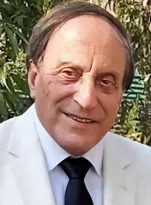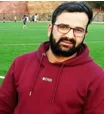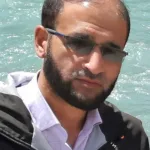SYED NISSAR H GILANI
Dr. Jolly Morilla, a distinguished Parsi physician, recently participated as the youngest and sole Parsi at an international medical conference at the SK Institute of Medical Sciences in Srinagar. During a television interview, she spoke eloquently about genetic studies on the Parsi community, highlighting their close genetic affinity to pre-Islamic Iranians. While some female genes from the Indian subcontinent indicate limited intermixing, the Parsis have largely retained the genetic traits of their ancient Iranian forefathers.
When asked about the declining Parsi population, Dr. Morilla candidly attributed it to increasing inter-community marriages. She emphasized that despite this trend, Parsis are content with their lives and have made significant contributions to their host country. She proudly mentioned notable Parsis like Dr. HomiBhabha, Ferozshah Mehta, Zubin Mehta, and the Tata family, who have left an indelible mark on Indian society.
Curious about the Parsi presence in Kashmir, Dr. Morilla’s interest was piqued. Dr. late Salah-u-Din, the host and then Head of the Department of Immunology and Molecular Medicine, arranged a meeting with a friend of a Parsi family at Hotel Ahdoos, a property that once belonged to them.
The history of Kashmiri Parsis dates back to the Dogra rule when three prominent Parsi families—the Pistonjees, Dhanjiboys, and Patels—settled in Srinagar’s prestigious The Bund area, near the banks of the River Jhelum. This historic neighborhood was a coveted address, once home to the British commissioner, their staff, and missionaries.
The Patel family, for instance, was appointed by Hari Singh to serve in the traffic wing of the police department, earning them the local nickname “Patel Police.” Mr. Patel had two sons, Rustom (Russy) and Jahangir (Jangu), with Russy currently residing in Bombay and Jahangir visiting frequently.
Another prominent Parsi, Dhanjibhoy, was allotted around 11 kanals of state land on a lease from Hari Singh to operate a horse-drawn postal carriage service between Srinagar and Muzaffarabad. He constructed a stable and a residential hut on the premises, which now houses Sadiq Handicrafts, Mehata Photographers, and Suffering Moses.
A regular bus service would operate from the nearby Pistonjee family’s premises between Srinagar and Rawalpindi, highlighting the region’s connectivity during that era. In 1967, Dhanjibhoy sold his property to Sheikh M. Abdullah, a former Chief Minister, and Haji Ghulam Mohi-u-Din, a renowned businessman, through an irrevocable power of attorney. Dhanjibhoy and his two daughters now reside in Mumbai.
The Pistonjee family was particularly influential in Kashmir, registered as state auctioneers and constructing several residential and commercial properties. One of their properties housed the India Assurance Company, where Behram Pistonji and Khusroo Pistonjee worked. Khusroo, a classmate of Dr. Farooq Abdullah, would often visit a popular hair salon in Sonwar, dressed in traditional Parsi attire.
Due to the small size of their community, the Parsis did not construct a formal temple. Their religious practices were likely carried out privately, reflecting the intimate nature of their presence in the valley.
The White Horse: A Symbol of a Bygone Era
A notable relic of the Parsi legacy in Kashmir is the White Horse model, a brand ambassador for Scotch whisky from Edinburgh, gifted to Pistonjee Sr. by the company. The model, specially packed and transported from London to Srinagar, has been preserved in its original form.
According to Javeed Makdoomi, former Inspector General of Kashmir, the White Horse model has an amusing anecdote associated with it. During a dinner hosted by D.W. Mehra, the then Chief of Police, a subordinate mistakenly delivered the White Horse model from Pestonji’s premises, thinking it was the whisky. The guests were amused by the wooden horse’s unexpected appearance, and the story has become a cherished memory.
The White Horse model stands as a testament to the Parsi community’s history in Kashmir, a reminder of the families who once thrived in the region and left their mark. Though they may have left Kashmir for good, their legacy lives on, a fascinating chapter in the region’s rich cultural heritage.
(The writer is an author and formal civil servant. Feedback: [email protected])






